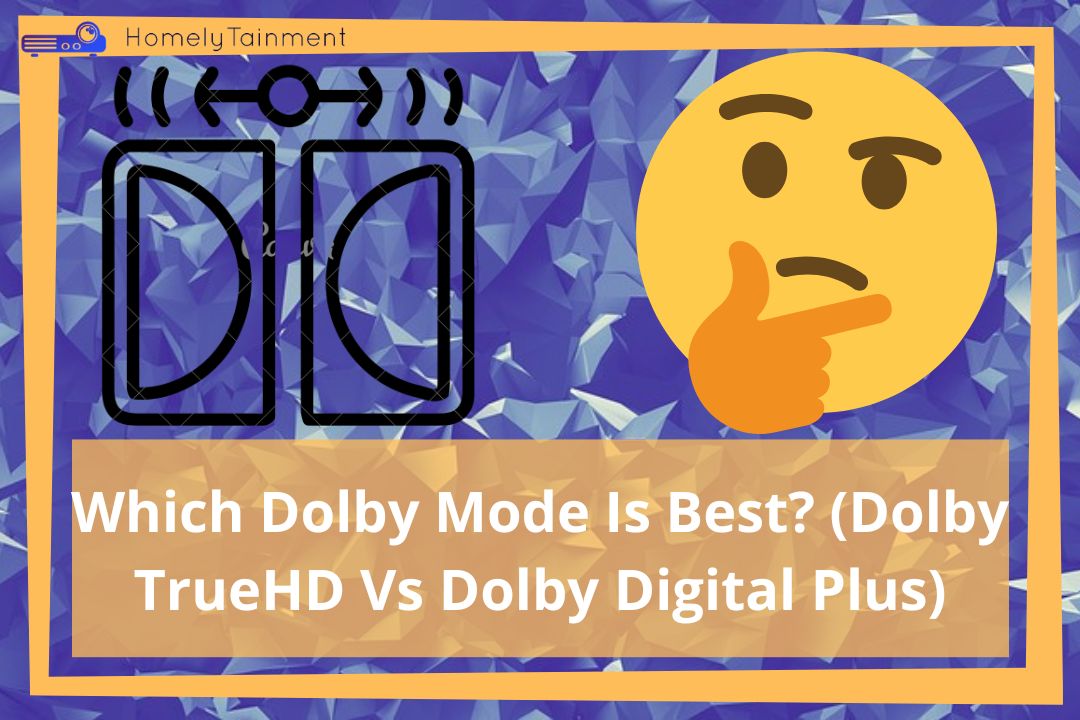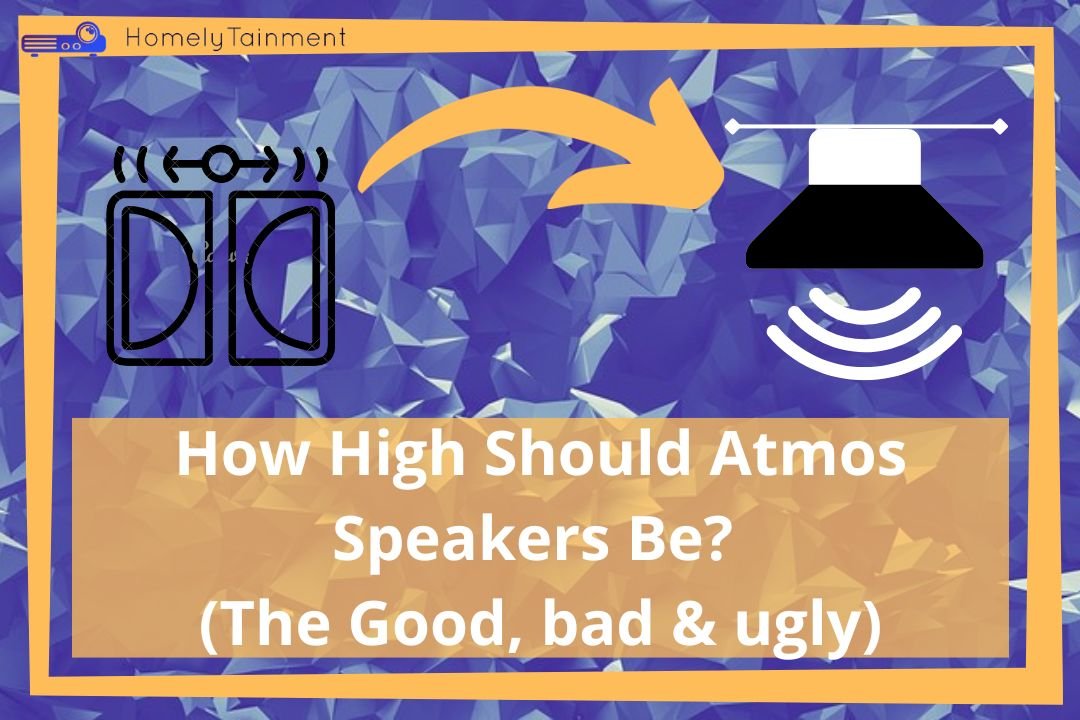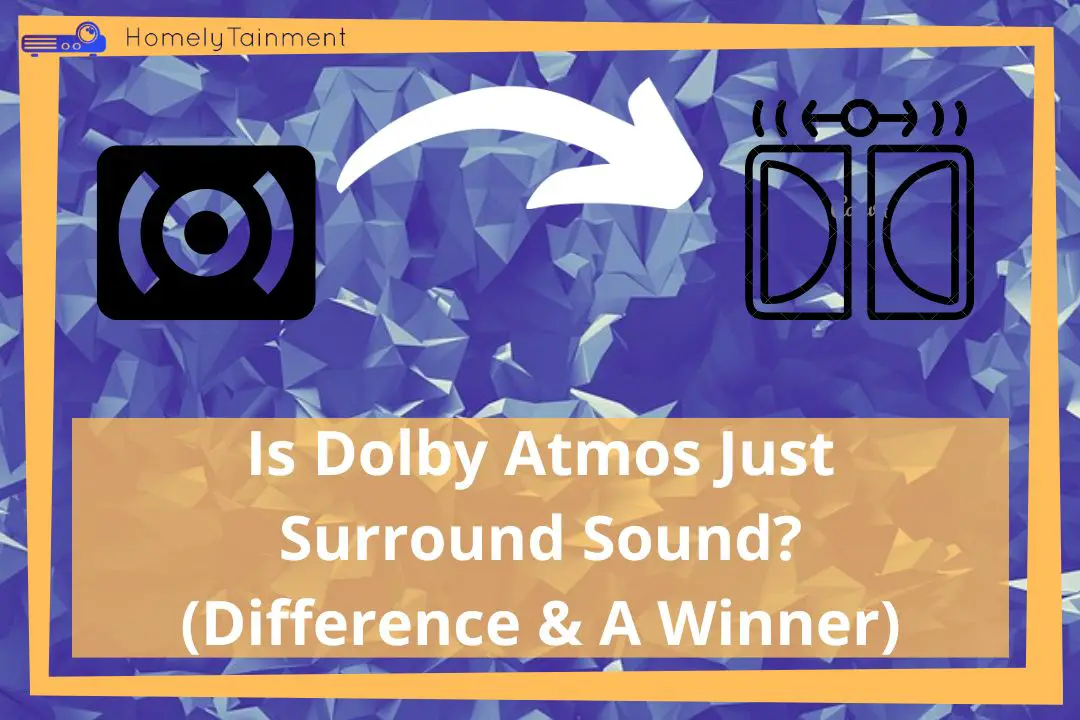
Homelytainment earn commissions (at no additional cost to you) if you purchase products from retailers after clicking on a link from our site.
There are three most used and mainstream modes/versions of the Dolby. These are Dolby TrueHD, Dolby Digital, & Dolby Digital Plus. You might know about these already, that’s why you are searching for them. So, which Dolby mode is the best?
At A Glance: If you watch TV broadcasts a lot of the time then Dolby Digital is ok for you, but if you want surround sound then Dolby Digital Plus is better. If you want object-based audio that surrounds you 360°, then Dolby TrueHD is the best for you.
Keep reading to know the details about them. I will compare the best two. So, you can choose the best one for you. They require different connection types and bitrates, that’s why keep reading to know them better.
The Most Used Dolby Modes/Versions
These are the mainstream modes of Dolby. That’s why we will discuss these only. Also, we will compare only two of them. I will tell the reason behind that in the comparison section.
Dolby Digital
The highest layout supported by Dolby Digital is 5.1. You can find many contents either downloadable or online streaming services in this format. But the TV broadcasters are the ones that use this mode a lot.
That’s why if you are using your TV for TV broadcasts, then this is the best mode for you to adopt.
The bitrate of this mode is only 640 Kbps. This is a very low bitrate. That’s why I will recommend avoiding this mode in your home theater, even if you are using a soundbar and not a complete set of speakers.
If the soundbar is just a single bar then you go with Dolby Digital but if it has separate surround, and sound speakers, with it then go for the Dolby Digital plus.
Dolby Digital Plus
This is the upgraded version of Dolby Digital. It has a comparatively higher bitrate. Its bitrate is 6 Mbps. This is enough bitrate to transfer the surround sound in high definition.
Many downloadable and online streaming services are providing content in this mode, but TV broadcasters are not using this mode.
You can have plenty of content in this mode. You will never run out of content.
Along with a higher bitrate. It supports 7.1 channels and even Dolby Atmos. It can support Dolby Atmos but transfers it with lossy compression because its bitrate is not enough to transfer true Dolby Atmos. That’s why it compresses the Dolby Atmos.
If you are having just 5.1 or 7.1 surround sound and no Dolby Atmos setup in your home theater, then ditch the Dolby Digital and adopt the DD+.
Dolby TrueHD
This is the most advanced version of Dolby audio. This can transfer the Dolby Atmos in its pure form without lossy compression because it has the highest bitrate of 18 Mbps.
You can find very limited content on the streaming services in this mode. But the production companies know the importance of newer and better technologies. That’s why the time is not far when you will get much more content in this mode.
The content is limited but still, it is not a handful. You will get a lot of options in your existing streaming plan that will be in this mode.
Read the comparison to know more about the pros and cons of these modes.
Know about all of the Object-based audio technologies. Click and read my this guide.
Dolby Digital Plus Vs Dolby TrueHD (Comparison)
I am comparing only these two because these are the most advanced ones and a lot of home theater enthusiasts have adopted the Dolby TrueHD and a lot of them are planning to adopt it.
| Audio Technology | Supported Audio Formats | Bitrate | Recommended Connection | Ratings |
|---|---|---|---|---|
| Dolby Digital Plus | Stereo, 5.1, 7.1, and lossy Dolby Atmos | Dolby Atmos at 768 Kbps | HDMI ARC | 10/6 |
| Dolby TrueHD | Stereo, 5.1, 7.1, and lossless Dolby Atmos | Dolby Atmos at 18000 Kbps | HDMI eARC | 10/10 |
You can see here that the Dolby TrueHD is the winner. The bitrate of Dolby TrueHD is very high and due to this bitrate, it can transform Dolby Atmos without any loss in the data.
The Dolby TrueHD is very honest because it can transmit the Dolby Atmos within its pure form. It doesn’t cut the edges of the Dolby Atmos.
While in the Dolby Digital plus you will not get the Dolby Atmos in its pure form but a lot of the data will be lost on the way.
Also, Dolby TrueHD requires HDMI eARC for its transmission. This technology is the latest with the highest bitrate on the market. Bitrate is how much data per second it can transfer. The eARC does justice to its image.
Dolby Digital Plus Pros & Cons
Pros
- It can give High definition surround sound up to 7.1 channels
- It can work with your old receiver because it supports HDMI ARC
- There is a wide range of content available in this mode
Cons
- You can’t get a pure form of object-based audio in this mode. You will get a lossy form of Dolby Atmos.
- It doesn’t support wider surround sound speakers if you want to add those to the existing 7.1
Dolby TrueHD Pros & Cons
Pros
- You get the best of the best of Dolby Atmos. You get it without any loss in the data
- It has the highest bitrate at the time of writing this guide.
- You can add those wider surround sound speakers to your existing system
Cons
- You need modern hardware for this one because it only works with the eARC.
- You don’t get a lot of content on the streaming services in this mode
Confused about what is the difference between the Dolby TrueHD, Dolby Atmos, and Dolby Digital Plus? Keep reading. I am answering this.
You will know many more things and complete in and out of the home theater by taking my FREE Home Theater Course. It will take 1-2 weeks to complete this course at a comfortable pace.
Final Verdict (Which is Better?)
I will recommend going with the Dolby TrueHD because it can support both surround sound and object-based audio in its pure form.
You will get the best possible audio experience with this one mode.
If you want Dolby Atmos then the TrueHD mode is the best and must for you. But if you have only a surround sound layout then go with Dolby Digital plus. But if you are having just a TV and soundbar and you use your TV for TV broadcasts a lot of the time then go with Dolby Digital.
Continue reading to know the important glossary in this guide. It will help you to understand this topic better. Don’t forget to read the FAQs at the end.
Is Dolby TrueHD worth it?
In-Short: The Dolby TrueHD is absolutely worth it because it provides high-quality on-ground surround sound and provides the new era of audio magic Dolby Atmos in a pure form.
In-Depth: The Dolby TrueHD is worth it because it provides surround sound. If you want an audio technology that can justify the Blu-ray disc video that you have bought. Then the D TrueHD is the way to go.
Because it will provide audio that will match the level of the high quality of the Blu-ray disc. The Blu-Ray movies should be accompanied by the D TrueHD because they offer Dolby Atmos and it can be delivered perfectly by D TrueHD.
Whether you want surround sound or Dolby Atmos TrueHD is the option to go with.
Read my guide is Atmos speakers worth it? You will know many more things about this type of speaker.
Is Dolby Atmos that much better?
In-Short: The Dolby Atmos is better because it creates a full virtual sound bubble around the audience. The Video’s world on the screen is created in audio from around the audience.
In-Depth: The 3D sound bubble around the audience is formed in such a way that every sound effect hits its angle in the home theater.
For example, if the bullet on the screen hits a corner of the wall. Its audio sound effect will exactly feel like a bullet hitting the corner in your theater room.
The lightning thunder hitting area on the screen will be replicated with its angle and hitting a point in the theater room.
Also, there was only mono and stereo audio at the beginning. The audio had only two channels at that time.
The Dolby Atmos was introduced in 1992. The Dolby Atmos is capable of 128 channels but for home theater, only 13 channels are supported at the time of writing this article.
Is 7.1 better than Atmos?
In-Short: The 7.1 is not better than Dolby Atmos, the 7.1 only provides a 2D sound field while Dolby Atmos provides a 3D sound field experience.
In-Depth: The 7.1 is based on the ground only. All of the speakers in the layout will be on the ground to create a 2D sound field. The Dolby Atmos does provide on-ground surround sound but also it provides a few channels above the head.
While the 7.1 is a better inconvenience because you don’t have to install extra speakers in the ceiling for the Atmos effects.
Read my guide to Know when should you use surround sound. Don’t forget to read the poll result in this article.
Did you get something out of this Dolby guide? Hold On We Have Something Exciting To Share.
[the_ad id=”4771″]FAQs
Does Dolby Digital Plus support Atmos?
Dolby Digital Plus does support Atmos but Dolby Atmos is transmitted with lossy compression. The bitrate of the DD+ is not that high to transmit complete data of the Dolby Atmos. That’s why it compressed the data. The compressing cut the edges of the Dolby Atmos data packets.
Is Dolby Atmos Better Than Dolby Digital Plus?
It is not the right question to ask. Because there is a huge difference between the Dolby Atmos and Dolby Digital Plus. Dolby Atmos is an audio format and the DD+ is the audio codec. The audio codec is responsible for transmitting this audio format.
Many people on Google were searching for this question. That’s why I answered it to clear their confusion.
Does HDMI ARC support Atmos?
The HDMI ARC supports the Atmos but not its bitrate. The HDMI ARC bitrate is 1Mbps and the Atmos is 18Mbps. That’s why the HDMI ARC will compress the Atmos to justify its 1Mbps bitrate. This will transmit lossy compressed Dolby Atmos.
This is why I say that yes HDMI ARC does support the Dolby Atmos but it doesn’t support the Atmos bitrate.
What is better than Dolby Atmos?
DTS: Virtual X is better in the convenience department than Dolby Atmos. You have to install dedicated speakers in the ceiling for the Dolby Atmos.
For DTS: virtual X you don’t need to install in-ceiling speakers. Just mount the speakers higher than your head and a calibration mic will calibrate the sound and you are good to go.
Helpful Resources For The FAQs To Read More
- This was my opinion, read more from Dolby Blog or indulge in this Reddit discussion. (Resource for the third answer)




